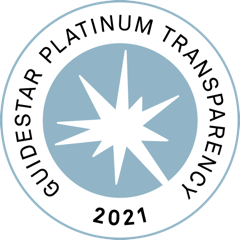Go back to trials list
A Phase I Study Investigating the Combination of the Ziftomenib, Venetoclax and Azacitidine in Pediatric Relapsed and Refractory Acute Leukemias
Description
To find the highest safe dose of ziftomenib that can be combined with venetoclax and azacitidine in pediatric participants with acute leukemia that has certain types of genetic mutations (changes).Primary Objectives - To determine the safety, tolerability, and recommended Phase II dose (RP2D) of ziftomenib in combination with venetoclax and azacitidine for pediatric participants with acute leukemias with KMT2A-r, NPM1-m or NUP98-r. Secondary Objectives - To determine the preliminary assessment of efficacy by overall response (OR), including complete remission (CR), CR with partial hematological recovery (CRh), CR with incomplete blood count recovery (CRi), morphological leukemia-free state (MLFS) and partial remission (PR), overall survival (OS), event-free survival (EFS) and duration of response (DOR) of pediatric participants treated with this combination. Exploratory Objective * To evaluate molecular and cellular markers that may be predictive of antitumor activity and/or resist
Trial Eligibility
Inclusion Criteria: 1. Age ≥ 2 year to 21 years 2. ECOG performance status of ≤ 2. 3. Relapsed/refractory: AML or Mixed phenotype acute leukemia (MPAL) patients with KMT2A-r, NPM1-m, NUP98-r or ALL/Acute leukemia of ambiguous lineage (ALAL) with KMT2A-r. a. ≥ 5% leukemic blasts in the bone marrow: 4. WBC must be below 25 K/µL at time of enrollment. Participants may receive cytoreduction prior to enrollment. 5. Baseline ejection fraction must be \> 40%. 6. Adequate hepatic function (direct bilirubin \< 1.5x upper limit of normal (ULN) unless increase is due to Gilbert's disease or leukemic involvement, and AST and/or ALT \< 5x ULN unless considered due to leukemic involvement, in which case direct bilirubin \< 3x ULN or AST and/or ALT \< 5x ULN will be considered eligible). 7. Adequate renal function (creatinine clearance ≥ 30 mL/min) unless related to disease. 8. In the absence of rapidly proliferative disease, the interval from prior treatment to time of initiation will be at least 14 days for cytotoxic or non-cytotoxic (immunotherapy agent(s), or an interval of 5 half-lives of the prior therapy. Oral hydroxyurea and/or cytarabine (up to 2 g/m2) for patients with rapidly proliferative disease is allowed before the start of study therapy, as needed, for clinical benefit and after discussion with the PI. Concurrent therapy for central nervous system (CNS) prophylaxis or continuation of therapy for controlled CNS disease is permitted. 9. Unless surgically or biologically sterile: Women of childbearing potential must agree to adequate methods of contraception during the study and at least 3 months for males, and 6 months for females, after the last treatment. Exclusion Criteria: 1. Participants who weigh less than 10kg. 2. Participants with any concurrent uncontrolled medical condition, laboratory abnormality, or psychiatric illness which could place the patient at unacceptable risk of study treatment. 3. The use of other chemotherapeutic agents or anti-leukemic agents is not permitted during study with the following exceptions (1) intrathecal chemotherapy for prophylactic use or for controlled CNS leukemia. (2) use of hydroxyurea for patients with rapidly proliferative disease or for control of counts during differentiation syndrome. (3) use of steroids for treatment of differentiation syndrome. 4. Participants with any severe gastrointestinal or metabolic condition which could interfere with the absorption of oral study medications. 5. Participants with a concurrent active malignancy under treatment. 6. Known active hepatitis B (HBV) or Hepatitis C (HCV) infection or active/uncontrolled HIV infection, AIDS, or currently taking contraindicated medications for HIV control. 7. Female participants who are pregnant or breast-feeding. 8. Participant has an active uncontrolled infection. 9. Any of the following within the 6 months prior to study entry: myocardial infarction, uncontrolled/unstable angina, congestive heart failure (New York Heart Association Classification Class .II), life-threatening, uncontrolled arrhythmia, cerebrovascular accident, or transient ischemic attack. 10. Mean corrected QT interval by Fredericia's formula \>480 ms on 12-lead electrocardiograms. 11. History of or any concurrent condition, therapy, or laboratory abnormality that in the Investigator's opinion might confound the results of the study, interfere with the participant's participation for the full duration of the study, or is not in the best interest of the participant to participate. 12. Clinically active central nervous system (CNS) leukemia. 13. The use of topical steroids for cutaneous graft-versus-host disease (GVHD) or stable systemic steroid doses less than or equal to 20 mg of prednisone daily are permitted. 14. Participants with Grade \> 2 active acute GVHD, moderate or severe limited chronic GVHD, or extensive chronic GVHD of any severity. 15. Has consumed grapefruit, grapefruit products, Seville oranges (including marmalade containing Seville oranges) or Star fruit within 3 days prior to the first dose of venetoclax.
Study Info
Organization
M.D. Anderson Cancer Center
Primary Outcome
Safety and adverse events (AEs)
Interventions
Locations Recruiting
MD Anderson Cancer Center
United States, Texas, Houston
Interested in joining this trial?
Our dedicated patient navigators are here to support you by reviewing the eligibility criteria to see if you might qualify for this trial.
Get the Latest Leukemia Updates, Delivered to You.
By subscribing to the Healthtree newsletter, you'll receive the latest research, treatment updates, and expert insights to help you navigate your health.



